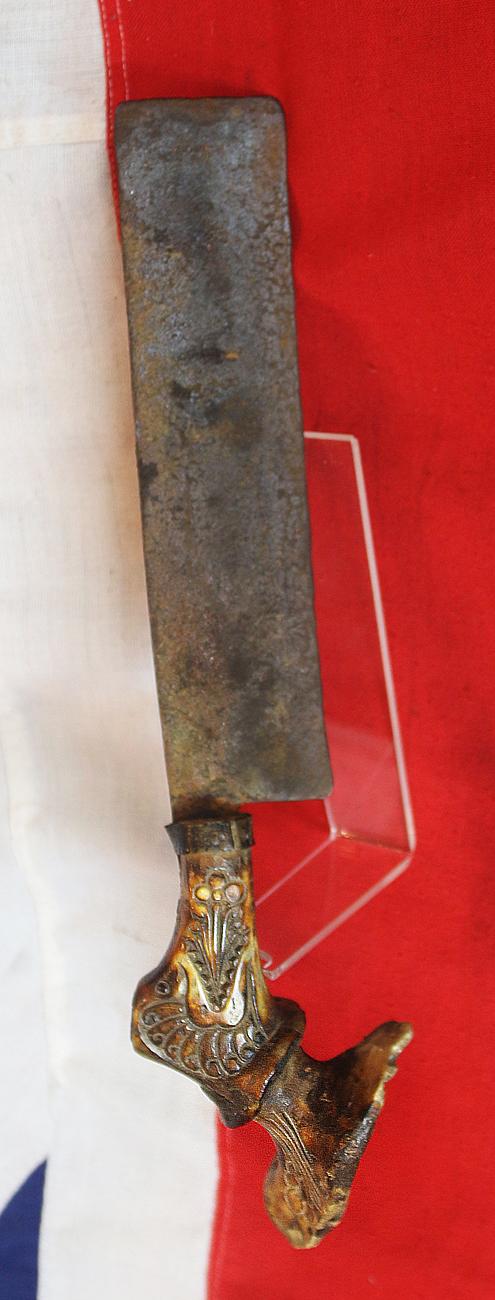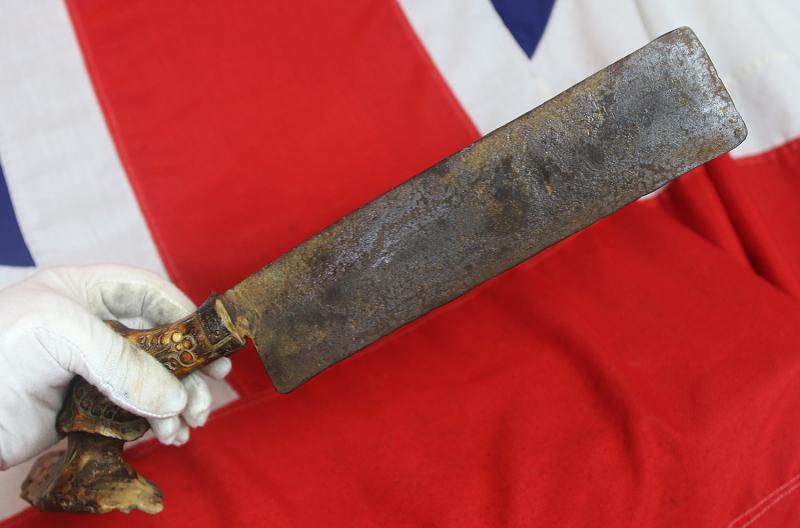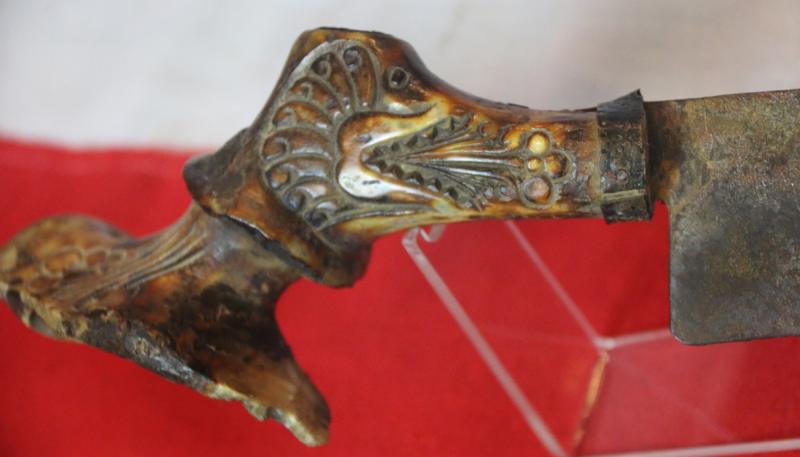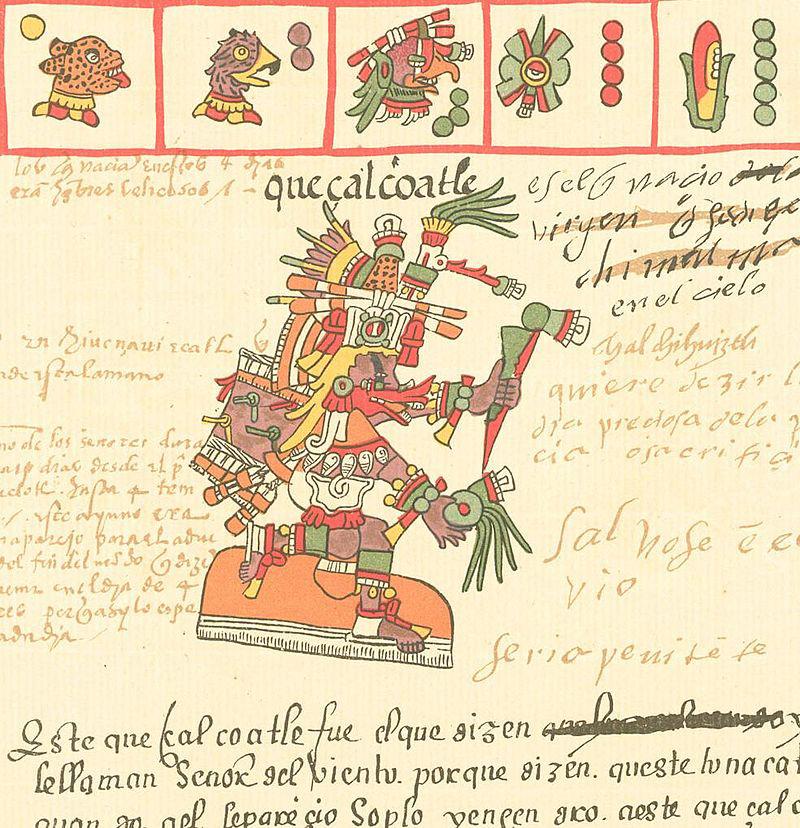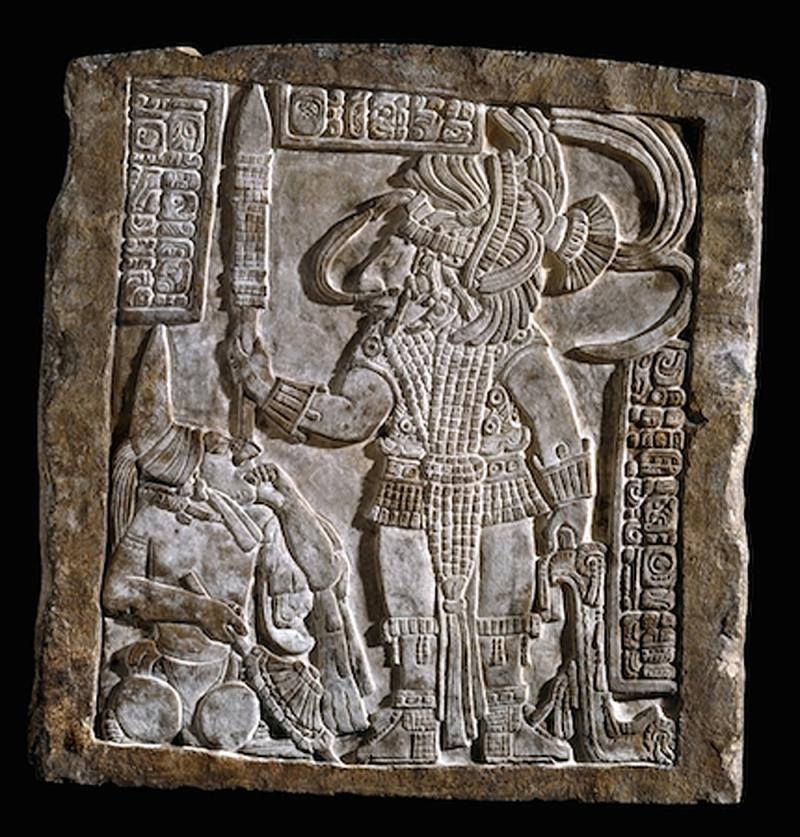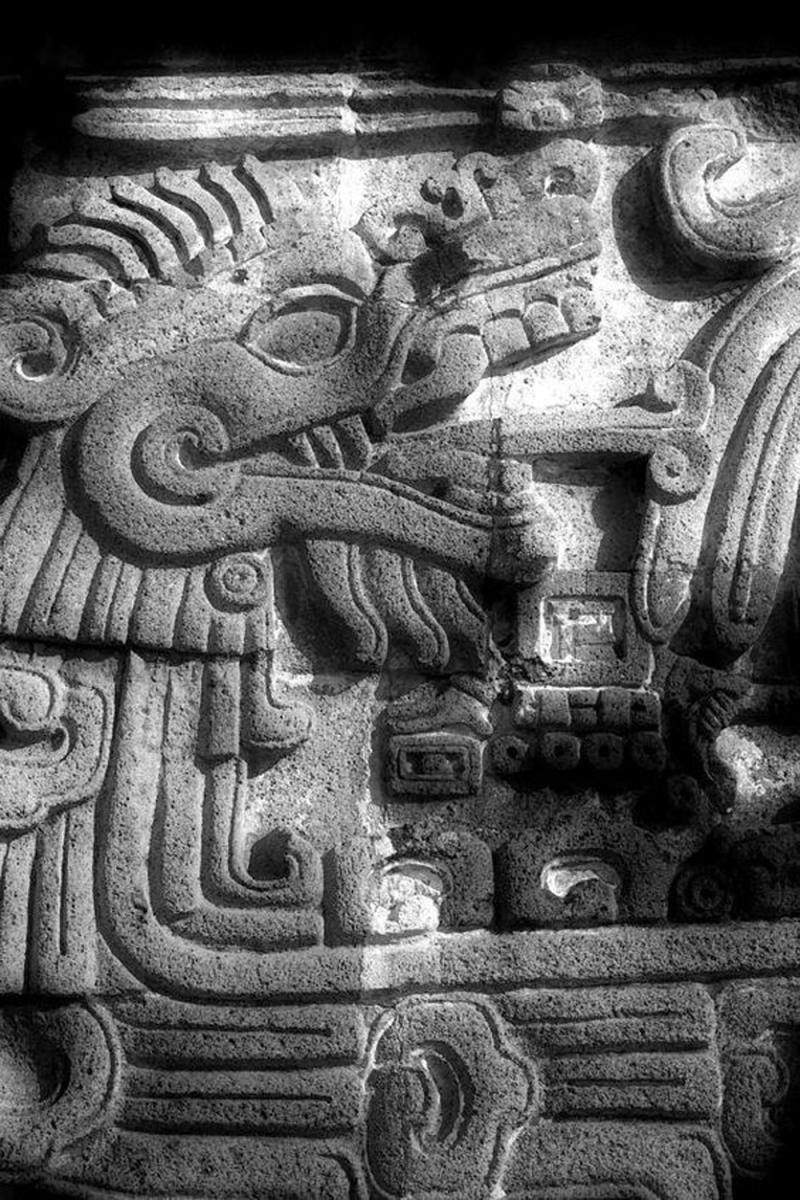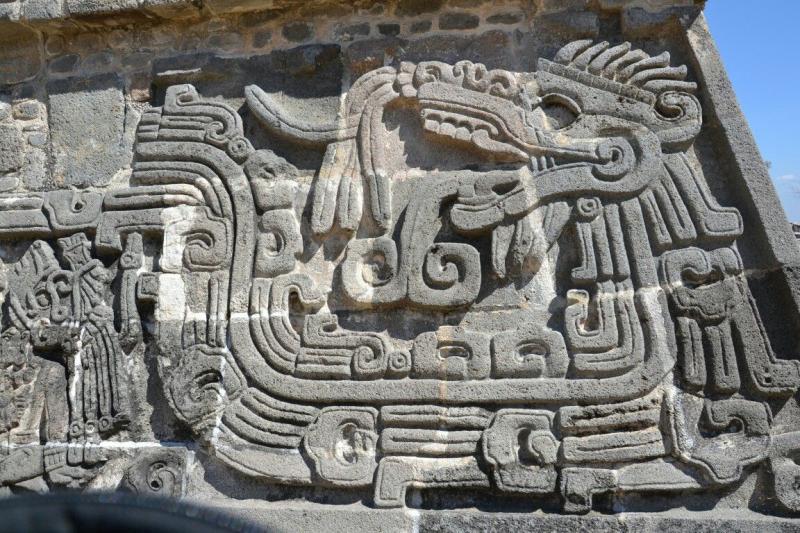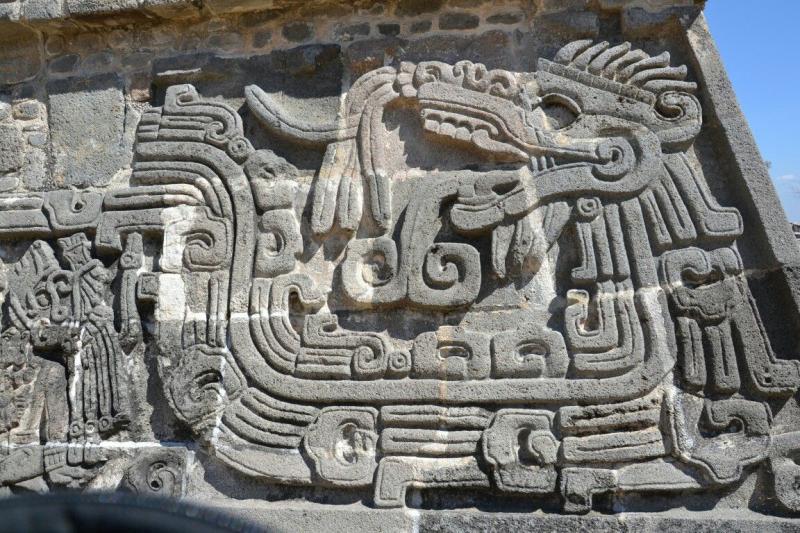A Most Intriguing, Early, Wide Bladed Mayan or Aztec Form Sacrificial Knife, Beautifully Carved Head of Possibly Vucub Caquix or Quetzalcoatl The Wind Spouting God, Upon the Stag-Horn Hilt
Acquired from an early, rare edged weapon collector,
An early antique wide hammer forged blade in an an almost Bowie style, with its clipped back tip form, and a single cutting edge. It is of a most unusual form of hilt with a large bladed knife, and may for tribal sacrificial purposes, or, a tribal ceremonial knife.
The carving is very reminiscent of the Mayan, Incan and Aztec culture, but some knives of this form can be little like those from Bali. The Aztec looking wind spouting snake head demon, is rather intriguing, and superbly executed, but as this is the first we have seen quite like this we can only suggest the comparisons we have seen in the past 50 years.
Vucub-Caquix is the name of a bird demon defeated by the Hero Twins of a Kʼicheʼ-Mayan myth preserved in an 18th-century document, entitled ʼPopol Vuhʼ. The episode of the demon's defeat was already known in the Late Preclassic Period, before the year 200 AD. He was also the father of Zipacna, an underworld demon deity, and Cabrakan, the Earthquake God.
To the Aztecs, Quetzalcoatl was, as his name indicates, a feathered serpent. He was a creator deity having contributed essentially to the creation of mankind. He also had anthropomorphic forms, for example in his aspects as Ehecatl the wind god. Among the Aztecs, the name Quetzalcoatl was also a priestly title, as the two most important priests of the Aztec Templo Mayor were called "Quetzalcoatl Tlamacazqui". In the Aztec ritual calendar, different deities were associated with the cycle-of-year names: Quetzalcoatl was tied to the year Ce Acatl (One Reed), which correlates to the year 1519.
One hand coloured page in the gallery is Quetzalcoatl as depicted in the Codex Telleriano-Remensis, there are also photos of original Mayan and Aztec stone carvings, depicting the god Quetzalcoatl. One can easily see the similarity to the carving depicted on the knife's hilt to these stone carvings
16 inches long overall.
Code: 24978
465.00 GBP

